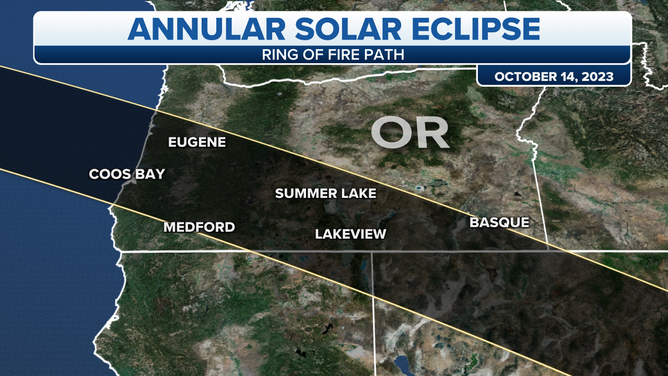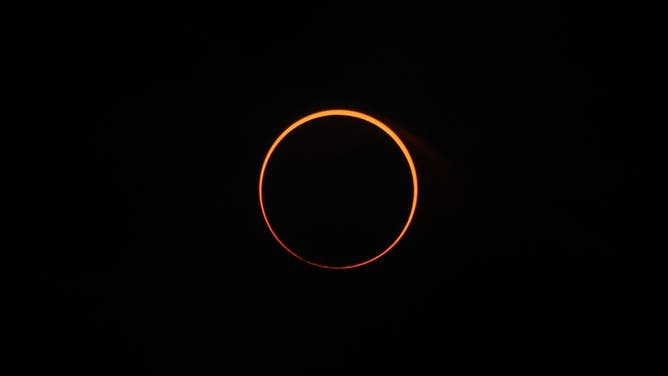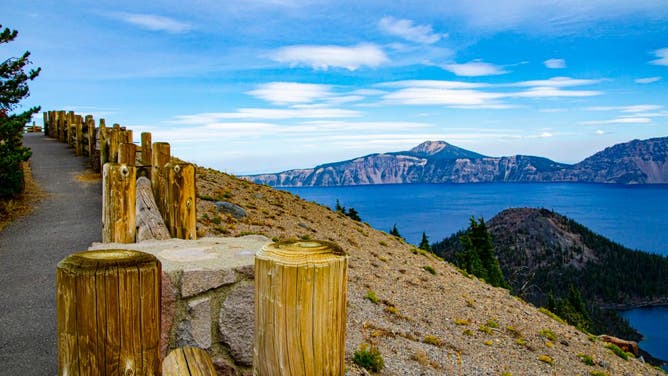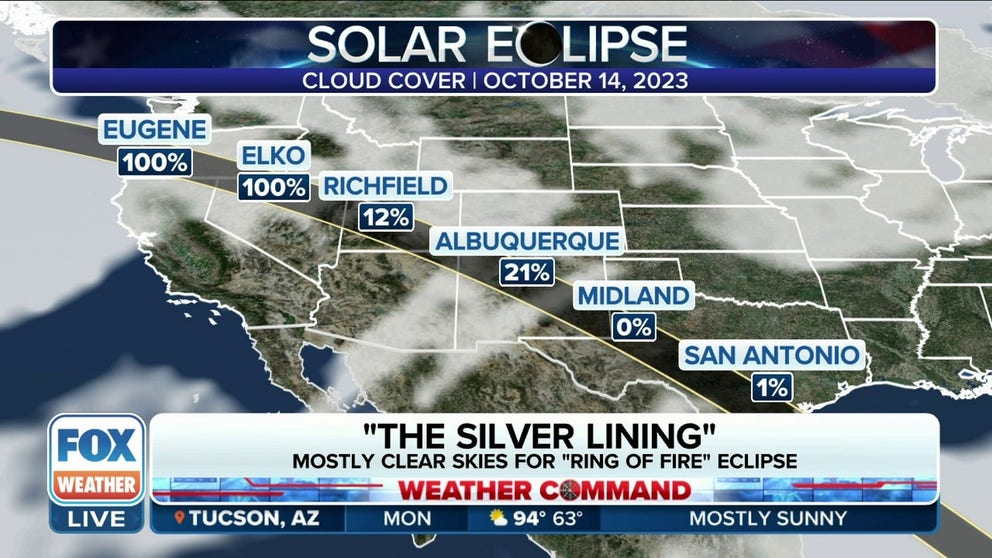Where to view the 'ring of fire' in Oregon during the October annular solar eclipse
If you're watching the eclipse in Oregon, you have lots of options to be along the path of maximum eclipse and the entire state will experience at least a partial eclipse.
Mostly clear sky for 'Ring of Fire' eclipse on Oct. 14
The forecast for the annular solar eclipse includes mostly clear skies for the path of maximum eclipse on Oct. 14. FOX Weather will be in Albuquerque for the eclipse coverage on Saturday.
EUGENE, Ore. – Coastal Oregon and the Pacific Northwest will be the first stop for the "ring of fire" during the annular solar eclipse in October.
Oregon is the first of nine states along the path of the maximum eclipse, which stretches from Coos Bay, Oregon, to southeast Texas on Saturday, Oct. 14, 2023.
Here's what you need to know about viewing the 2023 annular solar eclipse in Oregon.

The annular solar eclipse path through Oregon on Oct. 14, 2023.
(FOX Weather)
What is an annular eclipse?
An annular eclipse is not a total eclipse, as the Moon doesn’t entirely block the Sun’s light – only 90%. An annular eclipse happens when the Moon is at its farthest point in its orbit of Earth. During the maximum eclipse, the light from the Sun peaks out around the Moon, creating the "ring of fire" the annular eclipse is known for.
UTAH'S CANYONLANDS NATIONAL PARK PREPARES FOR OCTOBER SOLAR ECLIPSE CROWDS
Unlike a total solar eclipse, you will need to wear special eclipse glasses during the entirety of the annular eclipse. Taking the glasses off at any point, even during the maximum eclipse, is unsafe.
Where can I see the ‘ring of fire’ in Oregon?
If you're watching the eclipse in Oregon, you have many options to be along the path of maximum eclipse, and the entire state will experience at least a partial eclipse.

File photo: A solar eclipse is visible from district Simeulue, Aceh, Indonesia on December 26, 2019. (Photo by Khalis Surry/Anadolu Agency via Getty Images)
(Getty Images)
Unless you are on a boat, among the first to witness the "ring of fire" will be central coastal Oregon, including Coos Bay, Florence and Myrtle Point.
The eclipse path includes areas further inland, such as Eugene and Medford.

File photo: Crater Lake National Park in Oregon. A view of Crater Lake from Watchman Overlook. (Photo by: Bernard Friel/Education Images/Universal Images Group via Getty Images)
(Getty Images)
Several National Parks are included on the annular solar eclipse path, including Crater Lake National Park in Oregon.
Closer to the southeast state line, Klamath Falls and the entirety of the Oregon-California-Nevada border will be under the path of the greatest eclipse.
When is the solar eclipse in Oregon?
The eclipse in the U.S. begins in Oregon just after 8 a.m. PDT and the partial eclipse ends in southeastern Texas at 1:33 p.m. CDT.
Partial eclipse views and the "ring of fire" will vary by a few minutes for those in Oregon further east along the eclipse path.
The maximum eclipse, when 90% of the Sun is covered, happens at 9:18 a.m. PDT in Eugene, and the partial eclipse ends at 10:39 a.m. PDT. Crater Lake National Park and Klamath Falls will see the maximum eclipse at 9:19 a.m. PDT.
What will the weather be like in Oregon for the annular eclipse?
Cloud cover could obscure the view of the "ring of fire" for those in Oregon and California.
Fog could be a concern for those in Oregon early in the day. Heading to a higher elevation may give you a better chance to see the "ring of fire" with your eclipse glasses.

(FOX Weather)
It will be a cold morning in the Pacific Northwest for eclipse viewers.
Medford will be mostly cloudy with a high temperature of 69 degrees and a low of 49 on Saturday. Klamath Falls will also be mostly cloud with a high temperature of 65 degrees and a low of 39 degrees.
